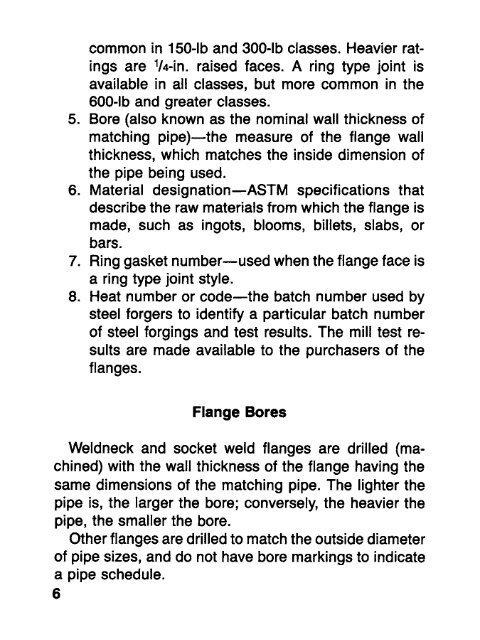Create successful ePaper yourself
Turn your PDF publications into a flip-book with our unique Google optimized e-Paper software.
common in 150-1b and 300-1b classes. Heavier rat-<br />
ings are ~/4-in. raised faces. A ring type joint is<br />
available in all classes, but more common in the<br />
600-1b and greater classes.<br />
5. Bore (also known as the nominal wall thickness of<br />
matching pipe)--the measure of the flange wall<br />
thickness, which matches the inside dimension of<br />
the pipe being used.<br />
6. Material designation--ASTM specifications that<br />
describe the raw materials from which the flange is<br />
made, such as ingots, blooms, billets, slabs, or<br />
bars.<br />
7. Ring gasket number--used when the flange face is<br />
a ring type joint style.<br />
8. Heat number or code--the batch number used by<br />
steel forgers <strong>to</strong> identify a particular batch number<br />
of steel forgings and test results. The mill test re-<br />
sults are made available <strong>to</strong> the purchasers of the<br />
flanges.<br />
<strong>Flan</strong>ge Bores<br />
Weldneck and socket weld flanges are drilled (ma-<br />
chined) with the wall thickness of the flange having the<br />
same dimensions of the matching pipe. The lighter the<br />
pipe is, the larger the bore; conversely, the heavier the<br />
pipe, the smaller the bore.<br />
Other flanges are drilled <strong>to</strong> match the outside diameter<br />
of pipe sizes, and do not have bore markings <strong>to</strong> indicate<br />
a pipe schedule.<br />
6
















